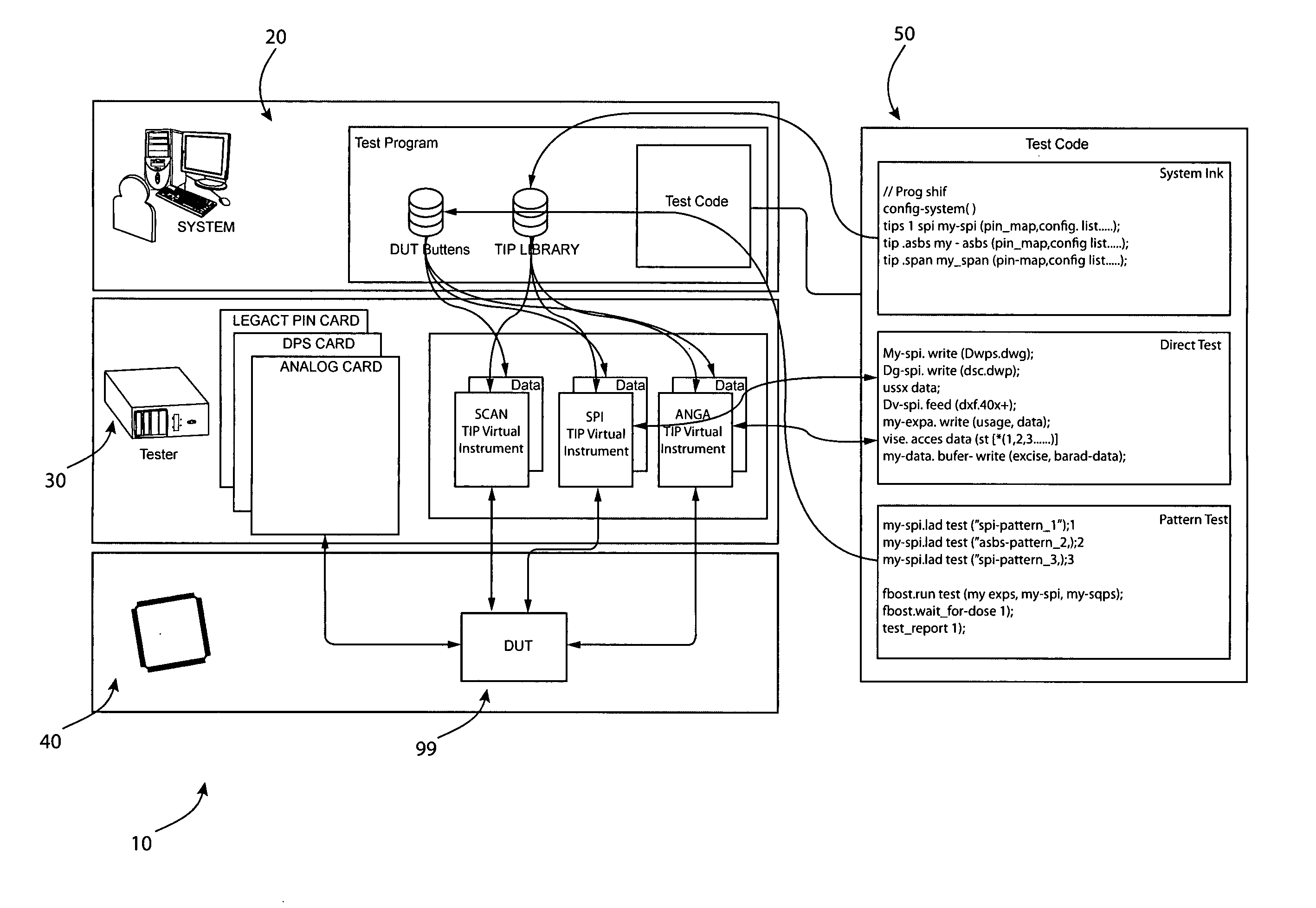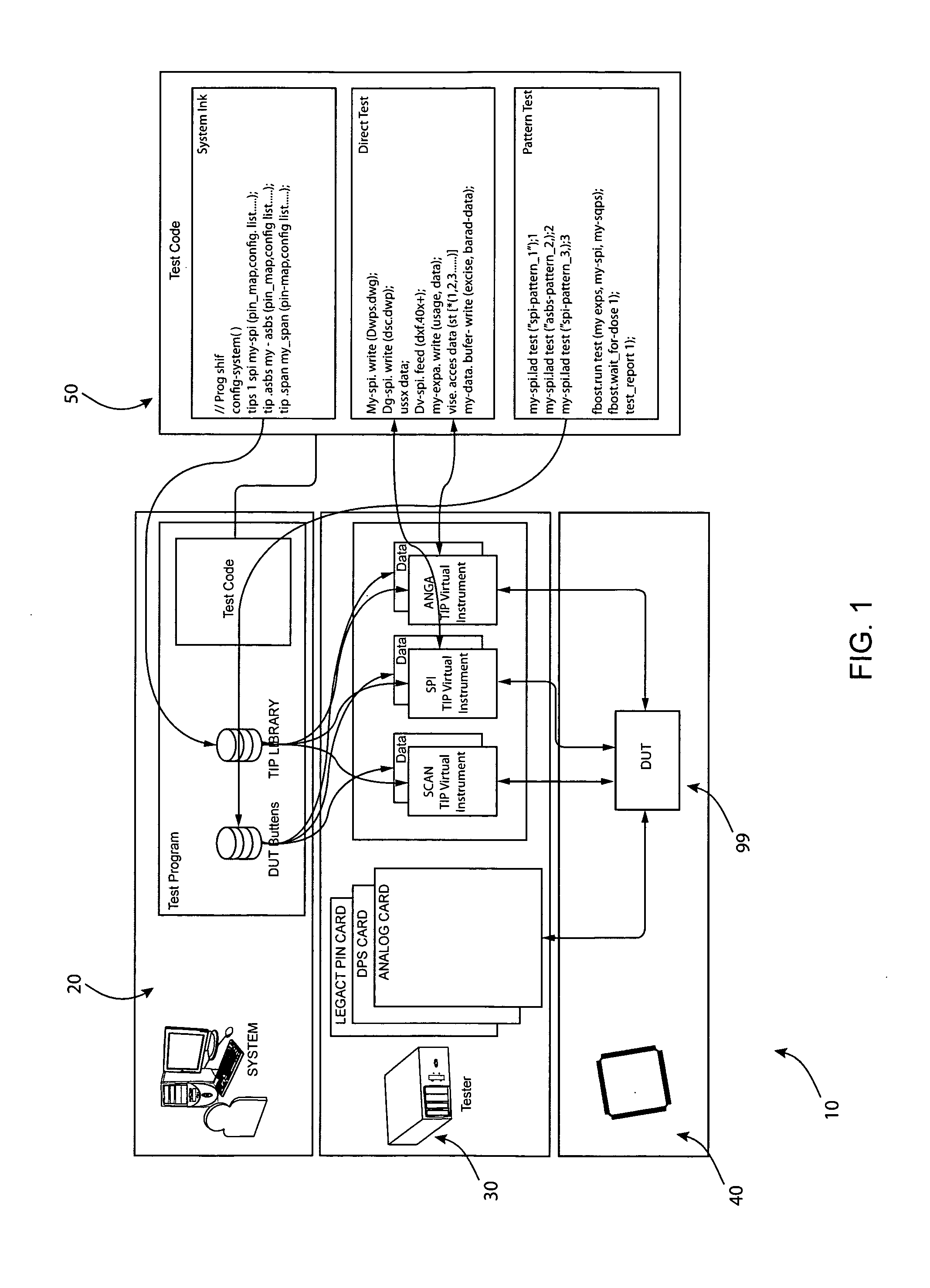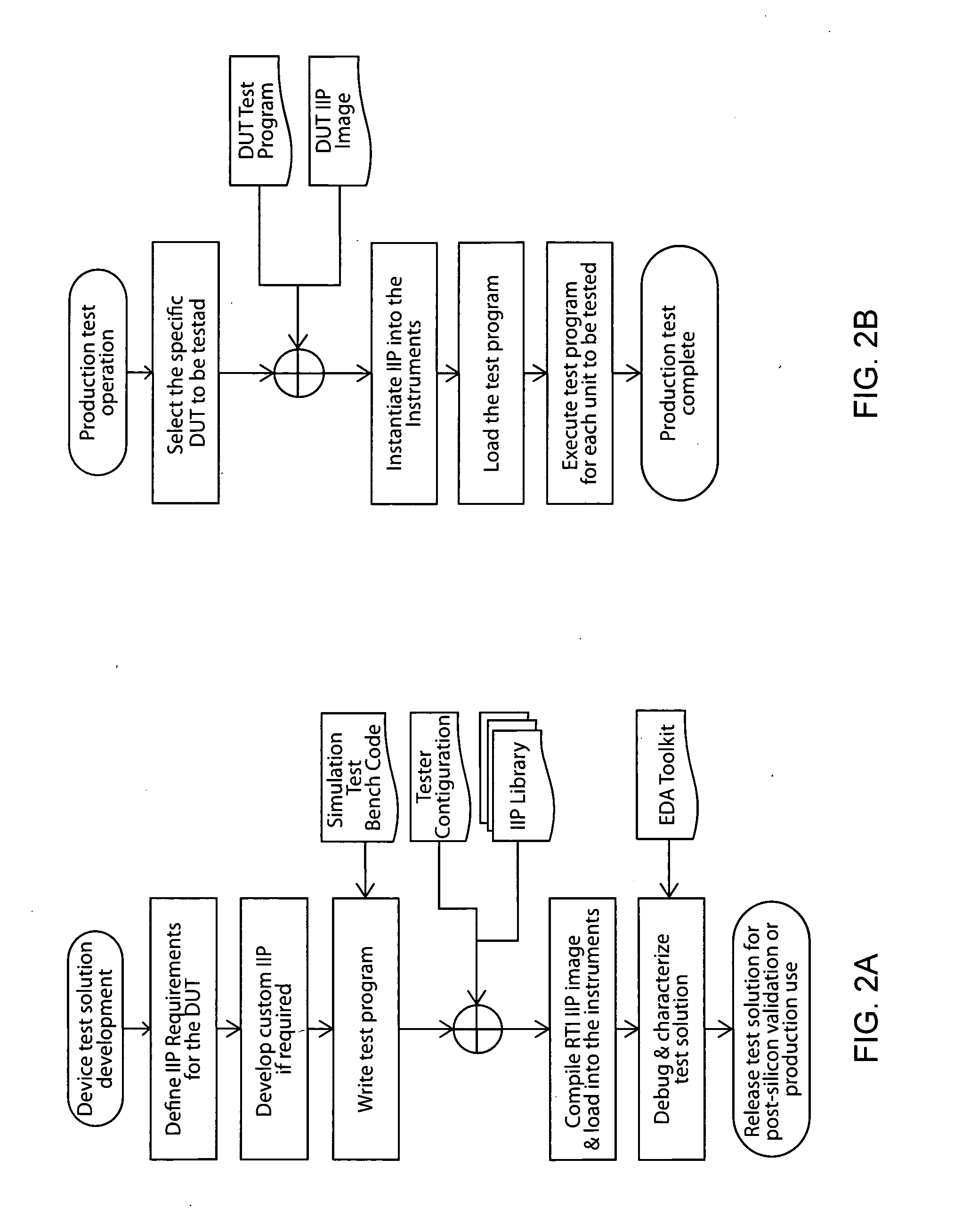Test IP-Based A.T.E. Instrument Architecture
- Summary
- Abstract
- Description
- Claims
- Application Information
AI Technical Summary
Benefits of technology
Problems solved by technology
Method used
Image
Examples
second embodiment
[0074]FIG. 9B shows the invention, where the TIP-based ATE instrument architecture replaces all four layers of the simulation testbench shown in FIG. 8. In this embodiment of the invention there is no connection to the simulator. The TIP has native random stimulus generation and response checking, As with the embodiment in FIG. 9A, the same EDA toolkit is available for debugging. This embodiment of the invention shows how the tools and methodology from pre-silicon verification are used for post-silicon validation, whereby similar test code can be used for stimulus and response checking of the DUT. Also, it's important to note that there are other embodiments of the invention that allow mixing of TIP test modes, random stimulus generation and response checking, and pre-defined stimulus and response checking, in the same TIP instance and across TIP instances. The invention is not limited to only this one embodiment.
third embodiment
[0075]FIG. 10A shows the invention, where the TIP-based ATE instrument architecture replaces the bottom three layers of the simulation testbench shown in FIG. 8. In this embodiment of the invention, the example simulation test program from FIG. 8 is used to pre-generate stimulus and response for all DUT interfaces, and write the data to one or more files in a predetermined format. The TIP-based ATE instrument architecture will then read the file or files, loading the specific stimulus and response into each TIP that connects to each DUT interface. This embodiment of the invention illustrates a “load and go” model that leverages the simulation testbench, but doesn't directly connect to it, which is applicable for production testing. Also note that the same EDA toolkit is available for debugging.
[0076]FIG. 10B shows a forth embodiment of the invention, where the TIP-based ATE instrument architecture replaces all four layers of the simulation testbench shown in FIG. 8. In this embodime...
PUM
 Login to View More
Login to View More Abstract
Description
Claims
Application Information
 Login to View More
Login to View More - R&D
- Intellectual Property
- Life Sciences
- Materials
- Tech Scout
- Unparalleled Data Quality
- Higher Quality Content
- 60% Fewer Hallucinations
Browse by: Latest US Patents, China's latest patents, Technical Efficacy Thesaurus, Application Domain, Technology Topic, Popular Technical Reports.
© 2025 PatSnap. All rights reserved.Legal|Privacy policy|Modern Slavery Act Transparency Statement|Sitemap|About US| Contact US: help@patsnap.com



